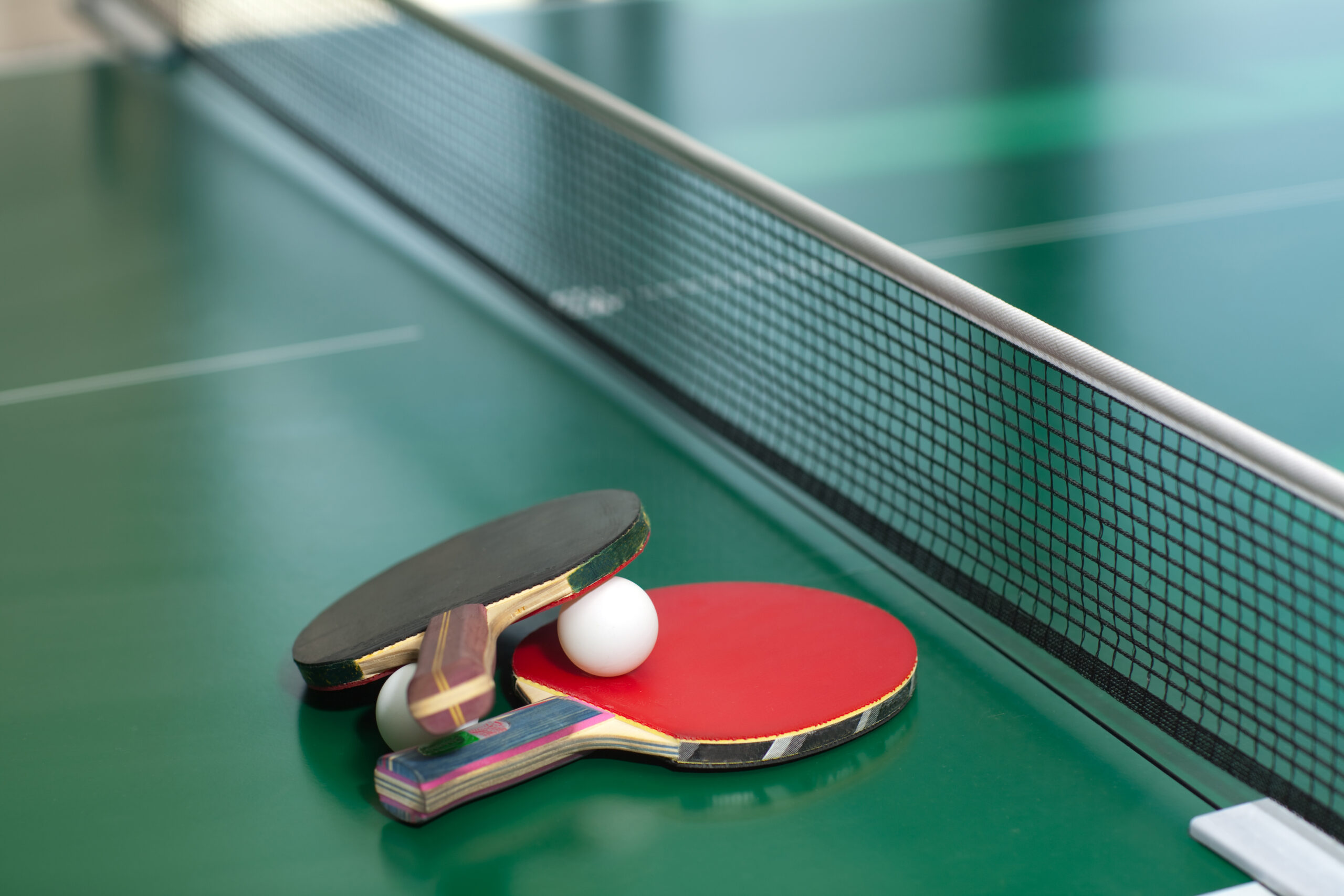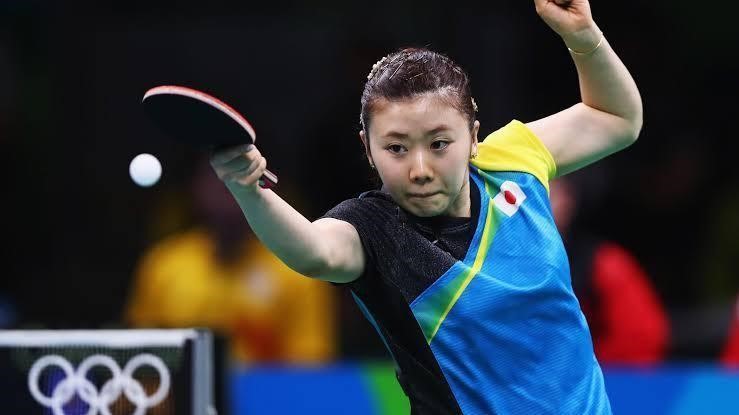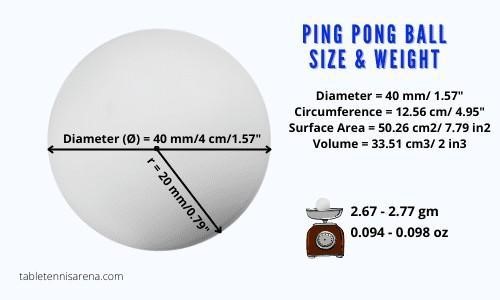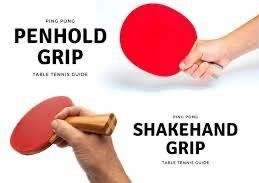Do ping pong and table tennis really differ from one another? Since a lot of people tend to be unfamiliar with the sport, it will be inevitable to be curious about what to use and what to call the sport especially for the people who do not know anything about it.
For the most part, table tennis and ping pong are the same! Table tennis is the sport’s official name, so when it’s called “ping pong,” it tends to be in informal settings, as opposed to professional ones.
If you still have burning questions, we’ll investigate further. Let's first learn what ping pong or table tennis is before we talk about it.
Table Tennis vs. Ping Pong: What’s the Difference?

Contents
All About the Game: What Is Ping Pong?
Ping pong is a game that requires precise movements, quick reactions, and strategic thinking. Despite its apparent simplicity, this sport takes commitment, practice, and a thorough comprehension of its basics to perfect.
A ball and paddles are used to play the indoor sport of ping pong on a table.
Alternatively referred to as table tennis, it started off as a leisure activity before becoming a global sport. It is played on top of a table on a surface like a smaller tennis court, with a short net spanning the middle.
Played from opposing ends of the table, the objective of the game is to score points by moving a light ball back and forth between two or four players equipped with paddles.
Since its formal classification was first used in the mid-1900s, the word has been used interchangeably with a brand of equipment designed specifically for the activity.

The table tennis setup is made up of a 5-foot-wide by 9-foot-long table with a
6-inch-high net placed across its width. In order to provide the ball spin, speed, and accuracy during rallies, players use a small wooden paddle with a handle.
Having a diameter of 40mm, the hollow ball is composed of celluloid or other acceptable materials. Table tennis balls composed of celluloid were used until 1902, when they were gradually replaced. 2.7g plastic balls are the official ball used in all international tournaments as of July 1, 2014.
There is a line that splits the table lengthwise for serving in doubles play, but otherwise, the ball can land wherever on the table.
There is a serve to begin a play. Serving in singles allows you to place the ball wherever on the table and onto your opponent’s side. Serving from the right side of the table and
landing over the net on the opposite side of the line is required in doubles. Check out our guide for more on how to play ping pong.
A point is awarded when the other team fails to hit the ball back on the table. The game continues until one side obtains a two-point advantage.
The rules for table tennis are the same for both singles and doubles. In order to win, one must be the first to win three sets. In an international competition, the first to win four sets in a seven-set game wins.
Now that you are aware of what table tennis and ping pong are, let’s discuss their differences
Table Tennis vs. Ping Pong: Are There Differences?
Though there are some minor distinctions between the two terms, table tennis and ping pong are frequently used synonymously. International organizations such as the International Table Tennis Federation (ITTF) acknowledge “table tennis” as the official name of the sport, despite the fact that both names apply to it.
Although it is a trademarked term, “ping pong” is occasionally connected to lighthearted play. Played in leagues, cups, and international championships worldwide, table tennis is the more serious and competitive kind of the sport.
Although table tennis and ping pong are fundamentally similar games, table tennis is recognized and regulated internationally. Whereas, ping pong is more commonly utilized for recreational, non-competitive play.
To sum it up, there is no big difference between table tennis and ping pong. If you respect the game, the player, and the experience of playing it, then you can refer to it as you please.
Game Talk: Do Americans Say Ping Pong or Table Tennis?
Both “ping pong” and “table tennis” are used in the United States. However, “table tennis” is more frequently used when speaking of the sport in an official or formal setting.
People may use the term “ping pong” interchangeably in ordinary or informal talks. Notably, “Ping pong” is likewise a trademarked name. “Table tennis” is the accepted and preferred phrase when discussing the sport in a formal context, particularly in competition situations or official documents.
Is a Table Tennis Ball a Ping-Pong Ball? All About Dimensions

Table tennis balls, often known as ping pong balls, are 40 mm in diameter and 125.6 mm in circumference. A ping pong ball weighs .095 oz (2.7g) and it is made of spherical polymer balls created specifically for the creation of these balls.
Ping pong balls are typicallyeither white or orange. White is the official color for table tennis tournament balls, while orange balls are used for casual games. This is because orange ping pong balls are easier to see in most settings.
Is Ping Pong a Brand? Decoding the Name
“Ping pong” is a name that is widely used to refer to the popular sport that is played on a table split by a net. It is not simply a brand; it is also a term that is frequently used interchangeably with “table tennis.”
Although the term appears on a variety of products associated with the sport, its usage goes much beyond just branding. Table tennis is the popular name for the sport of ping pong, not a brand.
On the other hand, certain companies that produce table tennis-related accessories and equipment may use the term “ping pong” in their branding.
It’s crucial to remember that “ping pong” is a cultural phenomenon rather than just a brand. It’s a cross-cultural sport that encourages physical activity and hand-eye coordination while uniting people in friendly competition.
Ping pong is a universally appealing game. It can be enjoyed by everyone from professional players competing on the international scene to casual enthusiasts playing in basements and community centers.
In summary, even though ping pong is linked to specific businesses in the table tennis equipment industry, its importance goes much beyond simple association. People of all ages and backgrounds may relate to this sport because of its rich history, universal appeal, and cultural relevance.
Table Tennis vs. Ping Pong: Size
It’s crucial to realize that “table tennis” and “ping pong,” especially in terms of size, are terms that are frequently used interchangeably to refer to the same activity. There may be minor variations in how they are understood and applied in different situations.
In terms of size, both “table tennis” and “ping pong” typically refer to the dimensions of the playing surface, the table itself. According to the ITTF), the standard dimensions for a table tennis table are 2.74 meters (9 feet) long, 1.525 meters (5 feet) wide, and 0.76 meters (2 feet 6 inches) high.
The net is set at a height of 15.25 centimeters (6 inches) and divides the table into two equal halves.
It is important to note, nevertheless, that the term “ping pong” can occasionally conjure up images of a smaller playing area, making it seem more informal or recreational.
Smaller, portable tables intended for informal play in homes, workplaces, or recreational areas may occasionally be referred to as “ping pong” tables. Comparing these tables to regulation-sized tables used in formal competitions may reveal differences in size and structure.
Irrespective of the term used, the dimensions of the playing surface are always the same because they are specified by the ITTF for official competition.
Ping Pong vs Table Tennis Paddles: Grips to Boost Your Game

As they are the same, there is no intrinsic distinction between ping pong paddles vstable tennis paddles.
Regardless of whether it’s a high-stakes competitive match or a recreational game in the backyard, both phrases apply to the equipment used to play the sport. There’s going to be the best and right paddle for you!
Like in other sports, players can play better if they know how to handle a table tennis racket correctly with the grips that the table tennis has. In ping pong, having a good grip on your paddle is essential for power, control, and mobility. Shakehand and penhold are the two primary grips, each with variations:
Shakehand Hold
The shakehand hold is more well-liked, particularly among novices. It’s about the same as using the paddle to shake hands.
Forehand:
- Thumb lies on the blade’s bottom edge across from the rubber.
- For stability, the index finger is extended down the side of the handle.
- For strength and control, encircle the handle with your middle, ring, and pinky fingers.
Backhand:
- Thumb moves slightly toward the middle of the handle, similar to the forehand grip.
- The index finger has positional flexibility for comfort and control.
Penhold Grip
The penhold grip provides greater variety and flexibility, but requires more advanced technology. With your thumb and index finger, hold the paddle like a pen.
Forehand
- For leverage, encircle the handle with your middle, ring, and pinky fingers.
- Supporting and guiding the stroke are done the thumb and index finger.
Backhand
- With fingers reaching around the back of the grip, the paddle rotated slightly.
Changes:
Chinese Penhold: The thumb goes around the side of the handle, like the forehand grip.
Japanese Penhold: Finger control is emphasized more than in the backhand.
Extra Advice:
In order to select the proper grip for yourself, you should consider:
Comfort: Experiment with both grips to find which one feels more at ease and natural. Penhold’s playing style is more varied and allows for quicker reaction times, but it takes more work. Shakehand gives you more control and power.
Coaching: You might want to think about getting advice from a coach who can evaluate your strengths and suggest the optimal grip for you.
To improve wrist flexibility and movement, loosen your grasp. The shot you’re playing will determine how you should adjust your grip.
Practice making fluid movements from your forehand to backhand grip. It’s okay to try different things and see what suits you the best! If you’re just starting off and would like to know what the various spin types are and what is the hardest skill in table tennis, visit this.
Always keep in mind that selecting a grip that enables you to play comfortably and efficiently is the most crucial step. You can strengthen your grasp with practice, and it will boost your game into the next level.
The Last Serve: Conclusion
For millions of players worldwide, ping pong, or table tennis, is much more than just a sport—it’s a source of unadulterated happiness, contentment, and fun. Ping pong offers a multitude of reasons to embrace and enjoy this favorite hobby, from the thrilling excitement of the game to the health benefits it gives.
Ping pong is a sport article that unites people, regardless of whether they are casual players trying to have fun with friends or elite athletes aiming for perfection. Its joy transcends boundaries and inspires the lives of the people.
